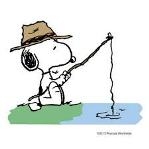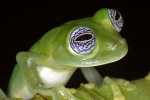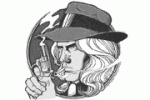Please explain the term "tritation"
-
tyroneshoes2
Please explain the term "tritation"
I see this term a lot, but I can't seem to find out what it means from the context of when I see it.
TIA.
TIA.
Re: Please explain the term "tritation"
Titration = Process of determining the appropriate pressure setting(s).
_________________
| Machine: AirSense 10 AutoSet with Heated Humidifer + Aifit N30i Nasal Mask Bundle |
| Additional Comments: SleepyHead-now-OSCAR software on Mac OSX Ventura |
- Wulfman...
- Posts: 6688
- Joined: Mon Sep 01, 2014 6:41 pm
- Location: Nearest fishing spot
Re: Please explain the term "tritation"
If you're searching for it the way you spelled it in the Subject line, you probably wouldn't find it.tyroneshoes2 wrote:I see this term a lot, but I can't seem to find out what it means from the context of when I see it.
TIA.
It's spelled "titration". And, if you do a Google search on "titration during sleep study" and "titration definition", you'll find enough reading material to keep you busy for quite some time.
There are a number of meanings and applications of the word in medical and chemical science. But, I'm sure you're wondering about how it applies to a sleep study.
So, from a basic/simple standpoint, it's the process during the sleep study of finding the proper pressure that best accomplishes the condition of keeping your airway open during sleep and minimizing the number of events.
Hope that helps.
Den
.
(5) REMstar Autos w/C-Flex & (6) REMstar Pro 2 CPAPs w/C-Flex - Pressure Setting = 14 cm.
"Passover" Humidification - ResMed Ultra Mirage FF - Encore Pro w/Card Reader & MyEncore software - Chiroflow pillow
User since 05/14/05
"Passover" Humidification - ResMed Ultra Mirage FF - Encore Pro w/Card Reader & MyEncore software - Chiroflow pillow
User since 05/14/05
Re: Please explain the term "titration"
First, here is a definition that you likely found while looking on the internet:
In a real cpap titration, many variables are considered not just obstructive apneas.
For example, is the patient awake and temporarily holding their breath? That's not an obstructive apnea.
Is the patient rolling over and temporarily not breathing? That's not an obstructive apnea either.
Is there a significant reduction in air flow and the patient is still trying to breathe? Possible hypopnea.
Is the patient snoring?
Is there a cessation in air flow and the patient is not trying to breathe? Possible central apnea.
etc.
In a CPAP titration, the process is similar. The patient is instrumented and placed on cpap at a relatively low pressure and observed. (Simplifying to only discuss obstructives) If obstructive apneas are observed, the pressure is increased a fixed amount and the patient is observed some more. This loop is continued until the occurrence of obstructive apneas ceases. At that point, the minimum pressure to resolve obstructive apneas has been determined just as in the chemical titration, the minimum amount of the test solution to cause the desired reaction is found by gradually increasing the dose until the reaction just occurs. (edit) Note that this applies only to the one sleep position and in one stage of sleep. In the real world its lots more complicated.ti·tra·tion [ tī tráysh'n ]
1.way of determining concentration of solution: a method of calculating the concentration of a dissolved substance in a known volume of test solution by adding measured quantities of a reagent of known concentration until a reaction occurs
In a real cpap titration, many variables are considered not just obstructive apneas.
For example, is the patient awake and temporarily holding their breath? That's not an obstructive apnea.
Is the patient rolling over and temporarily not breathing? That's not an obstructive apnea either.
Is there a significant reduction in air flow and the patient is still trying to breathe? Possible hypopnea.
Is the patient snoring?
Is there a cessation in air flow and the patient is not trying to breathe? Possible central apnea.
etc.
_________________
| Mask: Oracle HC452 Oral CPAP Mask |
| Humidifier: DreamStation Heated Humidifier |
| Additional Comments: EverFlo Q 3.0 Liters O2 PR DSX900 ASV |
Oracle 452 Lessons Learned Updated
DSX900 AutoSV with HC150 extra humidifier and Hibernite heated hose
Settings: EPAP Min-10.0, EPAP Max-17, PS Min-3, PS Max-10, Max Pressure-20, Rate-Auto, Biflex-1.
Sleepyhead and Encore Pro 2.21.
DSX900 AutoSV with HC150 extra humidifier and Hibernite heated hose
Settings: EPAP Min-10.0, EPAP Max-17, PS Min-3, PS Max-10, Max Pressure-20, Rate-Auto, Biflex-1.
Sleepyhead and Encore Pro 2.21.
- chunkyfrog
- Posts: 34544
- Joined: Mon Jul 12, 2010 5:10 pm
- Location: Nowhere special--this year in particular.
Re: Please explain the term "tritation"
Seriously, the OP's spelling has some logic;
because the process involves trying different pressures to find what works.
because the process involves trying different pressures to find what works.
_________________
| Mask: AirFit™ P10 For Her Nasal Pillow CPAP Mask with Headgear |
| Additional Comments: Airsense 10 Autoset for Her |
Re: Please explain the term "tritation"
That's really funny - thanks.chunkyfrog wrote:Seriously, the OP's spelling has some logic;
because the process involves trying different pressures to find what works.
_________________
| Mask: Oracle HC452 Oral CPAP Mask |
| Humidifier: DreamStation Heated Humidifier |
| Additional Comments: EverFlo Q 3.0 Liters O2 PR DSX900 ASV |
Oracle 452 Lessons Learned Updated
DSX900 AutoSV with HC150 extra humidifier and Hibernite heated hose
Settings: EPAP Min-10.0, EPAP Max-17, PS Min-3, PS Max-10, Max Pressure-20, Rate-Auto, Biflex-1.
Sleepyhead and Encore Pro 2.21.
DSX900 AutoSV with HC150 extra humidifier and Hibernite heated hose
Settings: EPAP Min-10.0, EPAP Max-17, PS Min-3, PS Max-10, Max Pressure-20, Rate-Auto, Biflex-1.
Sleepyhead and Encore Pro 2.21.
-
Ontario CPAP
- Posts: 58
- Joined: Thu Oct 24, 2013 7:47 pm
Re: Please explain the term "tritation"
I had to perform chemical titration studies in first year engineering. You take a beaker of liquid A, and add miniscule quantities of liquid B one tiny drop at a time, taking measurements as you go (pH, etc.). Drip. Take a measurement. Drip, take a measurement. Incredibly boring. Only the most diligent of experimenters could stay awake through the process, which could go on for an hour or two.
Many years later, my sleep titration study was far more enjoyable. I simply slept through it while a technician in another room slowly ramped up the CPAP pressure while recording measurements such as AHI, etc. I'm sure they found the sleep titration as riveting as I found my chemical titration study so many years ago.
In other words, it's much nicer to sleep through a titration study than to perform one.
Many years later, my sleep titration study was far more enjoyable. I simply slept through it while a technician in another room slowly ramped up the CPAP pressure while recording measurements such as AHI, etc. I'm sure they found the sleep titration as riveting as I found my chemical titration study so many years ago.
In other words, it's much nicer to sleep through a titration study than to perform one.
Re: Please explain the term "tritation"
All in all, for people, titration simply means finding out how much somebody needs of something without giving them more than they need as an individual. It can get confusing, though, in the context of sleep and pressures.
To a sleep lab performing an in-lab sleep study, "titration" generally means a sleep technician working live and in person at finding the best (as in, most comfortable and effective) pressure that will keep a person's airway open even when he is sleeping on his back in REM sleep during that one night of testing at the lab/center. That is the general idea, at least. Although, that all seems to be becoming less common, from what I've read. In a lab, there are at least two possible kinds of titration, in that a person may have an entire night of it (a full-night titration study) or a partial night of that (a titration portion of one overnight study that also includes a diagnostic portion earlier that same night). Those half-night-of-titration studies can be called split-night studies, since the night is split up into a diagnostic portion for discerning whether the patient qualifies for PAP and a titration portion for finding a good pressure to use. That is in a lab, though. And as I mentioned, in-lab sleep studies seem to be falling out of vogue in many respects, since payers hate to pay for such thorough testing these days in the U.S.
In the context of so-called home sleep studies, "titration" can mean people at the lab looking at the home-machine-reported data (one night's worth or many nights' worth) and deducing what may be the best pressure settings for the person. In some ways, doing that isn't as good as an in-lab sleep study, since less data are used to figure things out, and the full effects of the pressure aren't being observed by anyone trained to spot problems that applying pressure to the airway can unmask or make apparent. In other ways, professional titration based on at-home data can be a good thing (or an OK thing), in the sense that it allows a patient to sleep in his or her own bed, so the process is less disruptive, and the person's sleep may more closely reflect how the person normally sleeps.
To add to the confusion, those of us on this board who are self-titrators (or, tweakers) can sometimes speak of "titration" when we are referring to our, on our own, trying to find the best pressure settings on our machine that work best for us every night over time--in the sense of our feeling our best and having the lowest home-machine-estimated AHI.
Hope that helps without muddying the waters.
To a sleep lab performing an in-lab sleep study, "titration" generally means a sleep technician working live and in person at finding the best (as in, most comfortable and effective) pressure that will keep a person's airway open even when he is sleeping on his back in REM sleep during that one night of testing at the lab/center. That is the general idea, at least. Although, that all seems to be becoming less common, from what I've read. In a lab, there are at least two possible kinds of titration, in that a person may have an entire night of it (a full-night titration study) or a partial night of that (a titration portion of one overnight study that also includes a diagnostic portion earlier that same night). Those half-night-of-titration studies can be called split-night studies, since the night is split up into a diagnostic portion for discerning whether the patient qualifies for PAP and a titration portion for finding a good pressure to use. That is in a lab, though. And as I mentioned, in-lab sleep studies seem to be falling out of vogue in many respects, since payers hate to pay for such thorough testing these days in the U.S.
In the context of so-called home sleep studies, "titration" can mean people at the lab looking at the home-machine-reported data (one night's worth or many nights' worth) and deducing what may be the best pressure settings for the person. In some ways, doing that isn't as good as an in-lab sleep study, since less data are used to figure things out, and the full effects of the pressure aren't being observed by anyone trained to spot problems that applying pressure to the airway can unmask or make apparent. In other ways, professional titration based on at-home data can be a good thing (or an OK thing), in the sense that it allows a patient to sleep in his or her own bed, so the process is less disruptive, and the person's sleep may more closely reflect how the person normally sleeps.
To add to the confusion, those of us on this board who are self-titrators (or, tweakers) can sometimes speak of "titration" when we are referring to our, on our own, trying to find the best pressure settings on our machine that work best for us every night over time--in the sense of our feeling our best and having the lowest home-machine-estimated AHI.
Hope that helps without muddying the waters.
- Nick Danger
- Posts: 621
- Joined: Mon Jun 09, 2014 3:13 pm
Re: Please explain the term "tritation"
Actually, Google is really smart - if you google "tritation" it comes back with "Did you mean titration?"
_________________
| Machine: ResMed AirSense™ 10 AutoSet™ CPAP Machine with HumidAir™ Heated Humidifier |
| Mask: AirFit™ P10 Nasal Pillow CPAP Mask with Headgear |
| Additional Comments: APAP mode, minimum pressure = 9. No ramp, EPR = 3, medium. Soft cervical collar. Sleepyhead software. |
Re: Please explain the term "tritation"
Smart.
But evil.
But evil.











